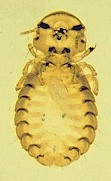I'd check to see if your birds actually have bugs before treating for them.My girls are showing the signs of having mites. (Biting wings, feathers falling out around base of tail and vent.) I want to nip it before it gets out of hand. I plan on spraying and dusting the coop and run with sevin. How should I directly treat the girls? Thanks.
Have you checked them over real well for mites and/or lice?
Best done well after dark with a strong flashlight/headlight, easier to 'catch' bird and also to check for the mites that live in structure and only come out at night to feed off roosting birds.
Wipe a white paper towel along the underside of roost to look for red smears(smashed well fed mites).
Part the feathers right down to the skin around vent, head/neck and under wings.
Google images of lice/mites and their eggs before the inspection so you'll know what you're looking for.
And yes Permethrin better choice if needed because Sevin has been given a lifetime withdrawal by FARAD.




